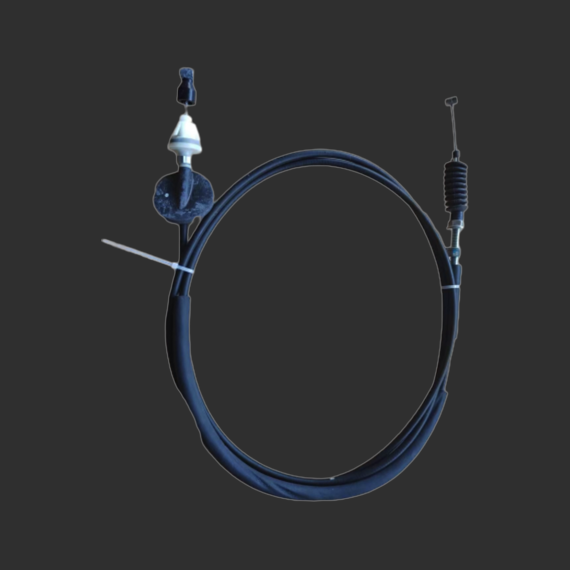Understanding Accelerator Throttle Cable Function and Importance in Vehicle Performance
Understanding the Accelerator Throttle Cable A Key Component of Automotive Performance
The accelerator throttle cable is a critical component in the operation of many vehicles, playing a vital role in controlling the engine's performance and responsiveness. While it may seem like a simple mechanical part, its function is essential for ensuring a smooth driving experience. In this article, we will explore the intricacies of the accelerator throttle cable, its importance, and its implications for vehicle maintenance.
What is the Accelerator Throttle Cable?
The accelerator throttle cable is a flexible metal cable that connects the accelerator pedal to the throttle body of an internal combustion engine. When the driver presses the accelerator pedal, this cable transmits the motion to the throttle body, which regulates the amount of air and fuel entering the engine. By controlling this mixture, the throttle body enables the engine to produce the desired power, directly affecting the vehicle's acceleration and performance.
Types of Throttle Control
Historically, vehicles utilized a mechanical throttle cable to achieve this control, allowing for a direct link between the driver’s foot and the engine. However, advancements in technology have led to the development of electronic throttle control (ETC) systems. In these setups, the accelerator pedal is equipped with sensors that send electronic signals to the engine control unit (ECU), which then adjusts the throttle position electronically. This system offers several advantages, such as improved fuel efficiency, smoother acceleration, and enhanced performance in various driving conditions.
Importance of the Accelerator Throttle Cable
The accelerator throttle cable is crucial for several reasons
1. Direct Control For vehicles with mechanical throttle systems, the cable provides direct feedback and control to the driver. This linkage allows for precise adjustments in acceleration, ensuring that the driver can respond quickly to road conditions.
accelerator throttle cable

2. Performance The responsiveness of the throttle cable can significantly affect vehicle performance. A well-functioning cable ensures that the engine receives the correct amount of air-fuel mixture, allowing for optimal power delivery and acceleration.
3. Safety A malfunctioning throttle cable can lead to dangerous driving situations. If the cable becomes stuck or frayed, it may cause the throttle to remain open, resulting in unintended acceleration. Regular maintenance checks are essential to identify and rectify any cable issues before they escalate.
4. Maintenance Regular inspection and maintenance of the accelerator throttle cable can prolong its life and maintain vehicle performance. Signs of wear, such as fraying or stiffness, should not be ignored. Lubricating the cable and ensuring it is properly routed can help prevent issues.
Signs of a Failing Accelerator Throttle Cable
Recognizing the signs of a failing throttle cable is paramount for every driver. Some common symptoms include
- Inconsistent Acceleration If the vehicle is not accelerating smoothly or experiences sudden bursts of power, it may indicate an issue with the throttle cable. - Sticking Pedal A throttle cable that is frayed or damaged may cause the accelerator pedal to stick, leading to unintended acceleration or sluggish responses. - Check Engine Light In modern vehicles, a malfunctioning throttle system can trigger the check engine light. If this occurs, it’s advisable to have the vehicle diagnosed promptly.
Conclusion
In summary, the accelerator throttle cable, while often overlooked, is a crucial component of any vehicle's performance and safety systems. Whether operating mechanically or electronically, its role in regulating engine power cannot be understated. For vehicle owners, understanding the importance of this component and keeping it well-maintained can lead to a safer and more enjoyable driving experience. Regular inspections can help prevent potential issues, ensuring that the vehicle remains responsive and reliable on the road. As automotive technology continues to evolve, staying informed about such essential components is vital for any driver eager to maintain their vehicle's performance.
-
Upgrade Your Vehicle with High-Quality Handbrake CablesNewsNov.01,2024
-
Optimize Your Bike's Performance with Quality CablesNewsNov.01,2024
-
Enhance Your Vehicle's Performance with Quality Clutch ComponentsNewsNov.01,2024
-
Elevate Your Vehicle's Performance with Quality Throttle CablesNewsNov.01,2024
-
Elevate Your Vehicle's Performance with Quality CablesNewsNov.01,2024
-
Affordable Solutions for Your Cable NeedsNewsNov.01,2024
